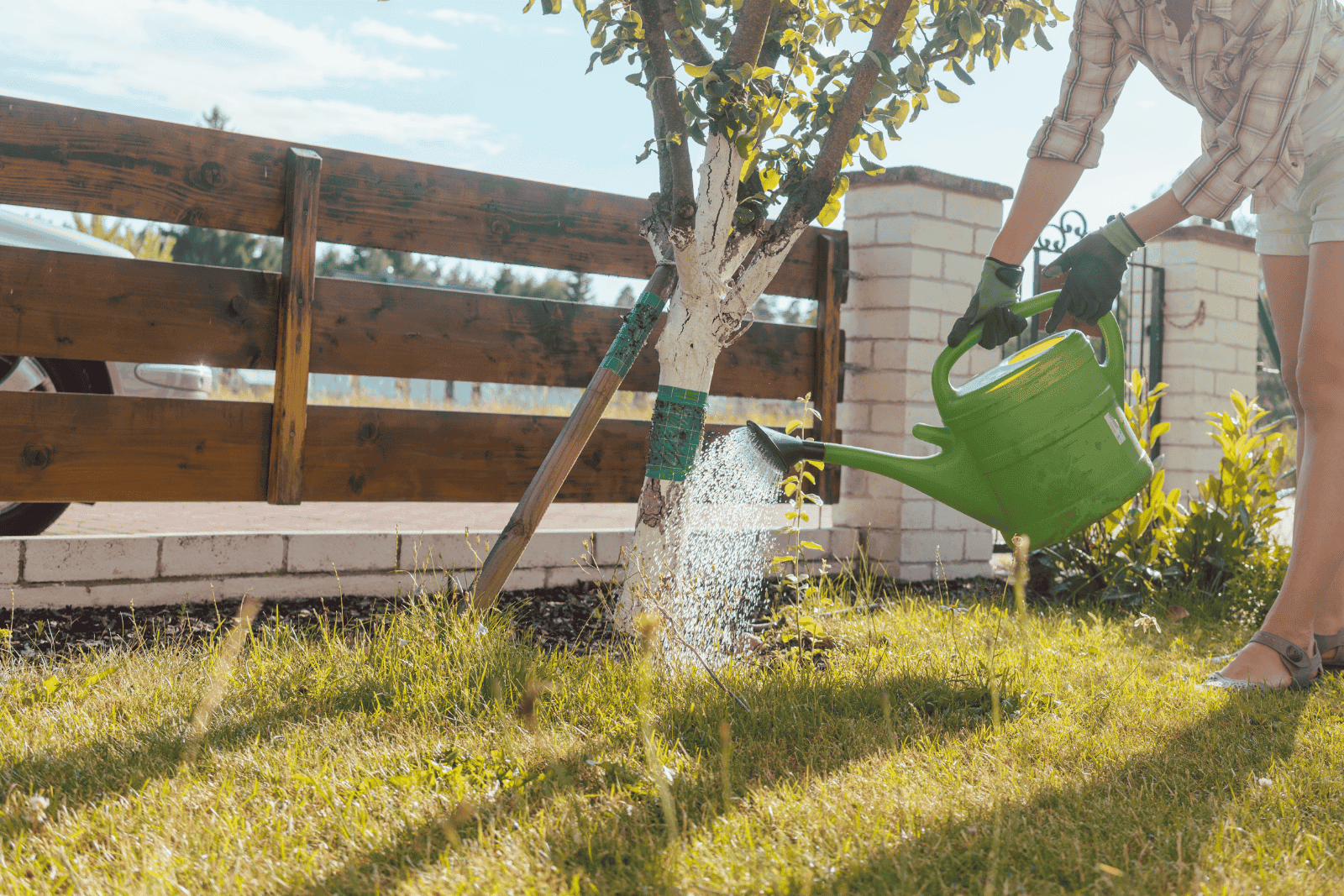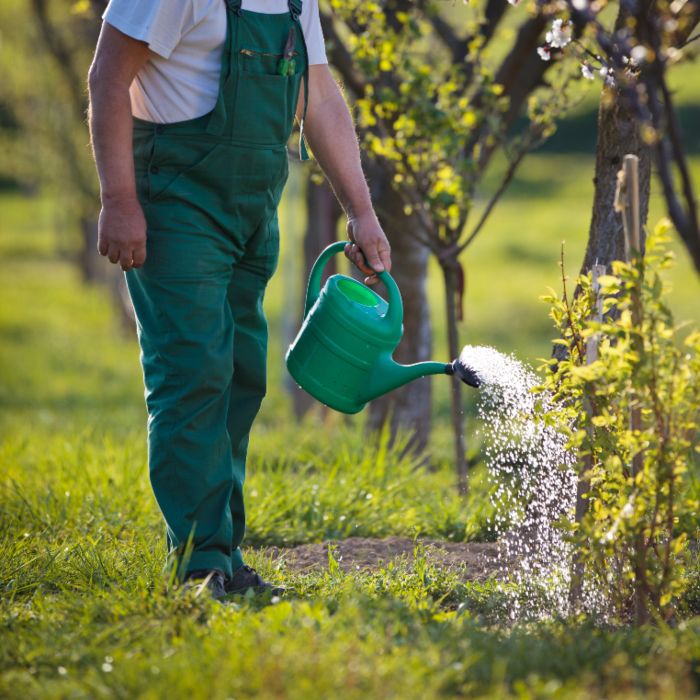
How to Prevent Overwatering
Having a lush, vibrant tree in your garden or landscape is beautiful. However, sometimes, in our quest to provide our trees with the best care, we accidentally overwater them. Overwatering can be as harmful as underwatering, and it’s important to recognize the signs and promptly take action.
Signs of Overwatered Plants
In this article, we’ll explore the main signs indicating your tree is overwatered, such as root rot, stunted growth, and leaf wilt. We’ll also delve into reviving overwatered trees and the correct way to water them to ensure optimal tree health and growth.
Roots are Critical to Plant Life
Root health is crucial to a tree’s overall well-being. Overwatering can lead to waterlogged soil, which suffocates the roots by depriving them of oxygen. This condition, known as root rot, can be identified by a foul smell coming from the soil and by the appearance of discolored, mushy roots. Healthy roots are firm and white, while unhealthy ones are brown or black and feel slimy.
Stunted or Slow Growth
One of the telltale signs of overwatering is stunted growth. Excess water limits oxygen availability to the root system, hindering its ability to absorb nutrients and grow. If you notice that your tree has not been growing as expected or appears smaller than it should be for its age, overwatering might be the culprit.
Water Pressure Begins to Build
Another sign that your tree receives too much water is water pressure buildup in the soil and leaves. When the soil becomes oversaturated, it creates a high-pressure environment that can force water up to the surface. This can lead to water pooling around the tree’s base, causing further damage to the root system and potentially developing fungi and diseases. When the leaves are overly hydrated, water pressure builds inside plant cells until their walls burst. This kills the cells and forms discolored blisters or lesions on the leaf.
Leaves Turn Brown and Wilt
While it might seem counterintuitive, overwatering can lead to brown and wilted leaves just as underwatering can. Excessive moisture prevents the roots from absorbing nutrients properly, causing the leaves to lose color and vitality. If you notice your tree leaves turning brown and limp, it’s a sign that something is amiss with the watering regimen.
How to Revive Plants That Have Been Overwatered
If you’ve identified the signs of overwatering in your tree, don’t panic. There are steps you can take to help your tree recover and regain its health:
- Adjust Watering Frequency: Scale back on your watering frequency immediately. Allow the soil to dry out between waterings. Stick a long screwdriver into the soil; if the soil is soft and moist, clumps stick to the screwdriver and hold off on watering.
- Assess the Soil Drainage: The first step is to ensure proper drainage for your tree. If the soil around your tree’s base is waterlogged, consider improving drainage by amending the soil with organic matter and creating a gentle slope to encourage water runoff.
- Cultivate Healthy Soil: Overly saturated soil isn’t just detrimental to tree health but also to soil microbes. All these microbes are necessary to break down organic matter and nutrients for tree roots to absorb. Furthermore, these good microbes compete with pathogens to reduce tree disease and infection risk. Give your soil a health boost by adding a dose of beneficial microbial inoculants, such as Bacillus subtilus or mycorrhizal spores. But remember, this only helps if coupled with an appropriate watering routine.
- Monitor for Improvement: Closely monitor your tree’s progress over the next few weeks. New growth and improved leaf color are positive signs that your efforts are paying off.

How To Water Your Plants In The Future
Prevention is key to maintaining the health of your trees. To avoid overwatering and ensure your trees receive the right amount of moisture, follow these guidelines:
- Water Deeply but Infrequently: Aim to saturate the soil around the tree’s root zone deeply when you water. This encourages the roots to grow deeper in search of water. However, water less frequently to avoid waterlogging. If you need help, A Plus Tree offers Supplemental Deep Watering services.
- Use the Right Amount: Exact watering requirements vary with tree species, climate, soil type, and site conditions. There isn’t one rule for how to water, but use the tips below as a guideline. And remember to check on your tree and the soil. Watering is an art as much as it is a science!
How Often?- Hot, dry weather: water about 2x a month.
- Cool-weather: water about 1x a month.
How Much?
- Small trees: 15-20 gal each time
- Large trees: 30-40 gal each time
- Mulch: Apply a 2-4” deep layer of wood chip mulch around the base of your tree to help retain soil moisture and regulate temperature. If possible, spread the mulch out the tree’s drip line. However, be cautious not to pile mulch against the tree trunk, as it can create a moisture-retaining environment that promotes disease.
- Check Soil Moisture: Regularly check the soil moisture around your tree. Stick a screwdriver into the soil to gauge its moisture level before watering. If the soil is hard and no moist soil clumps stick to the soil, it’s time to water. Alternatively, dig a 6-9” deep hole in the soil. If all the soil is dry, it’s a sign to water your trees.
Caring for trees requires a delicate balance, and overwatering can severely affect their health and growth. By recognizing the signs of overwatering and taking corrective measures, you can nurse your tree back to health. Moving forward, remember to water your trees appropriately. With the right care, your trees will thrive and contribute to the beauty and value of your landscape for years to come!





